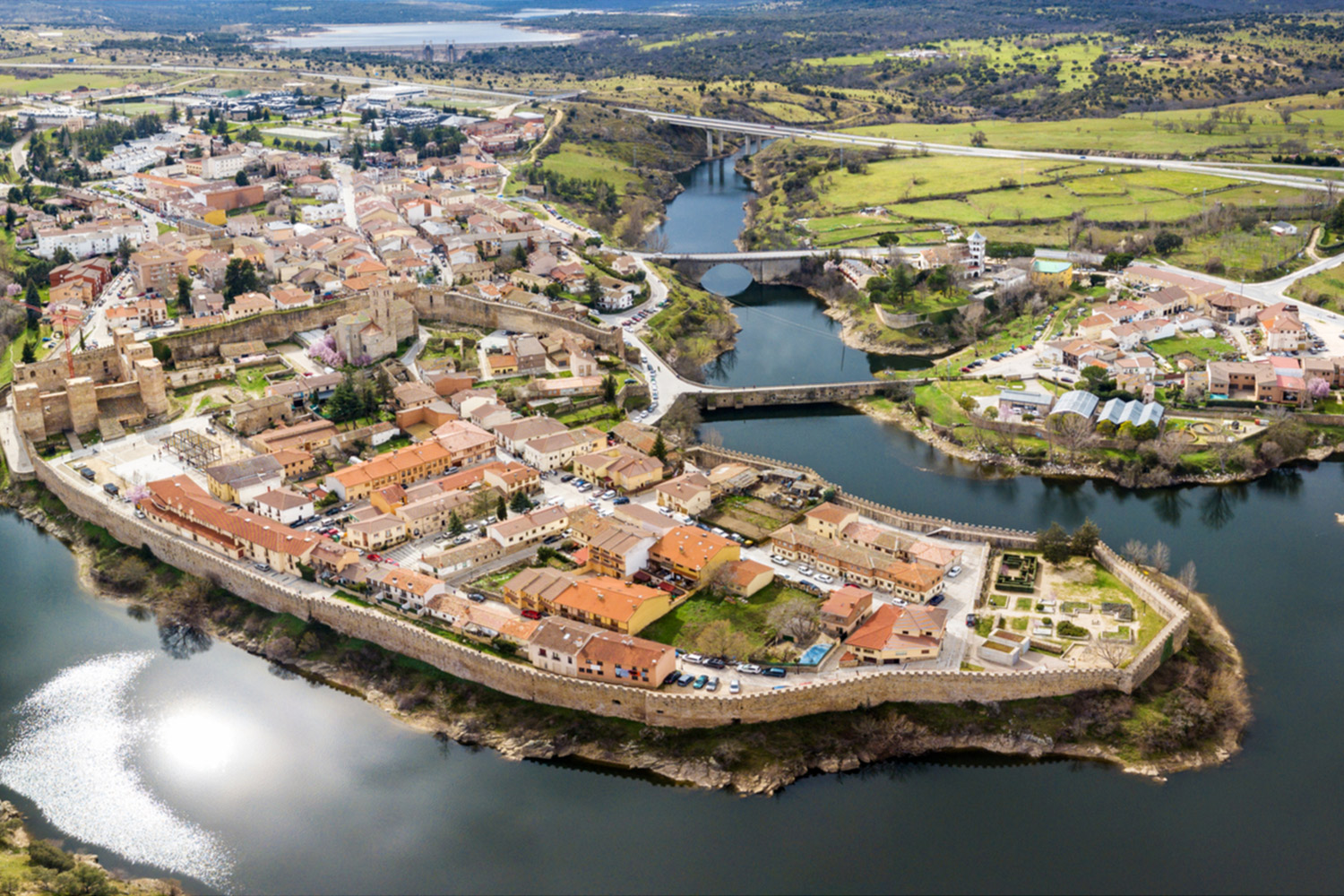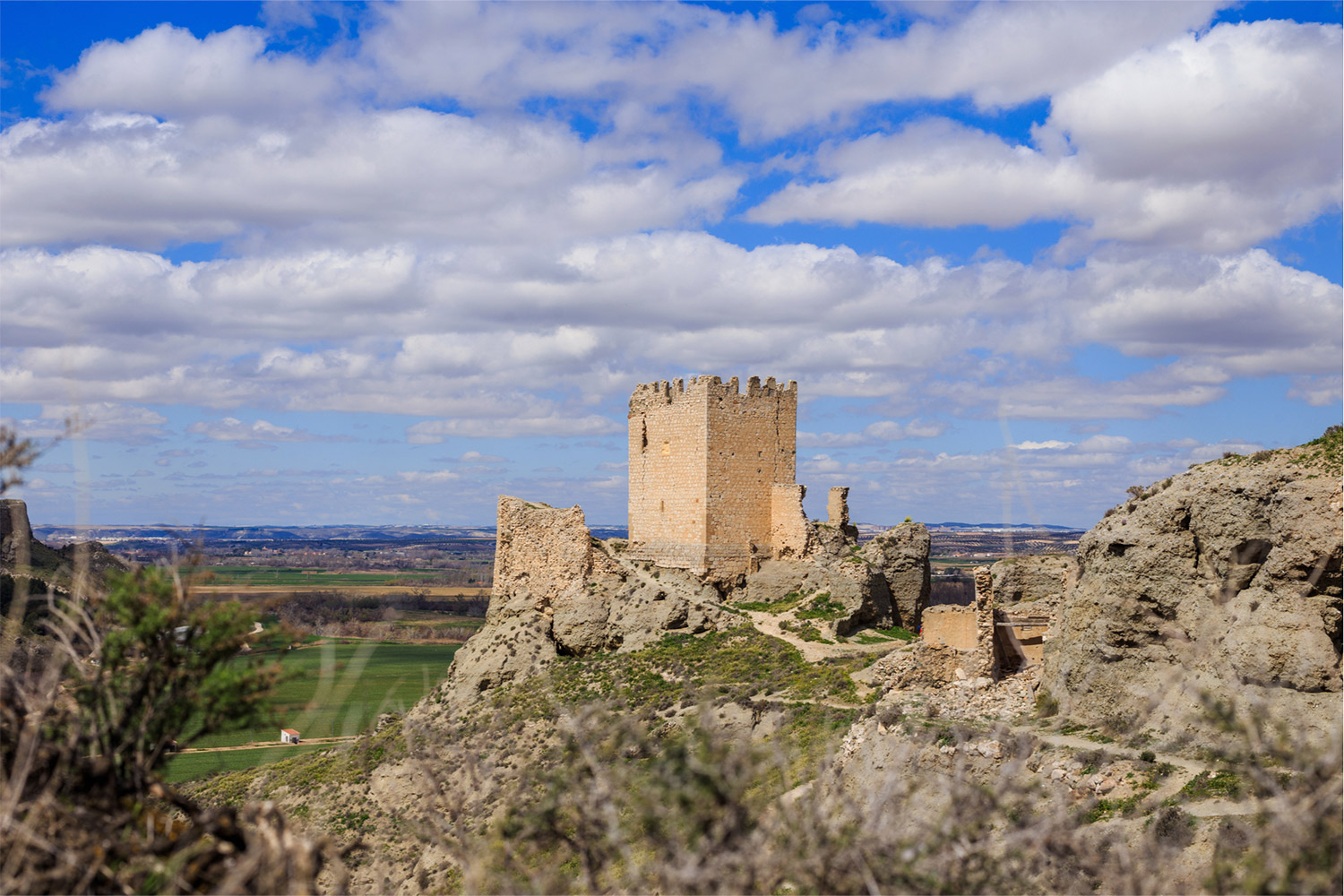- Discover Madrid
- To see and do
- For you
- Accommodation
- Plan your Trip
- Professionals

Things to do in madrid
iconic places in madrid
Itineraries in Madrid
sights in madrid
top attractions in madrid
museums in Madrid
Tourism in Madrid
In the middle valley of the Lozoya River, Buitrago stands on a promontory surrounded by the Lozoya River, from which it takes part of its name. It is located at the foot of the mountain pass of Somosierra and about 75 km north of the city of Madrid.
It stands out for the medieval wall as Muslim as Castilian and Christian, which surrounds its historic center and is in turn surrounded by the Lozoya River. Its castle or Alcazar together with the Church of Santa Maria del Castillo, the Clock Tower and the wall give a medieval air to this municipality, which boasts a cultural agenda so active that has proposals for the four seasons.
Buitrago del Lozoya is one of the most picturesque municipalities of the Community of Madrid because of its walled enclosure, well preserved and surrounded by the river from which it takes its name.

Along with ten other tourist municipalities of the Community of Madrid, Buitrago del Lozoya is part of the tourist promotion program Villas de Madrid. This town was declared a Historic-Artistic Site and an Asset of Cultural Interest in 1993, thanks to its spectacular walled enclosure of Arab origin, the best preserved in the Community of Madrid.
Since the Middle Ages, Buitrago has had great strategic importance as a communications hub. Over time it has suffered various confrontations in its territory, such as the passage of Napoleonic troops in 1808 that caused a population and economic collapse from which Buitrago took many decades to recover or the Spanish Civil War, with the location of the Somosierra front just a couple of kilometers from the municipality.
More information: Buitrago del Lozoya
Credits Image: Buitrago del Lozoya © Andrés García Martín. Shutterstock
Surrounded by the vineyards and olive trees of the Vega del Tajuña, its urban center was declared a Historic-Artistic Site in 1974. With its film-like Plaza Mayor, its streets full of history and a local cuisine that can be tasted in inns and restaurants... Everything that can be said about this town is an understatement. Come and see for yourself!
Chinchón, along with ten other charming tourist towns, is part of the Villas de Madrid program.
The first settlers arrived in this area in the Neolithic period and lived in some of the many caves in the vicinity, such as the so-called Cueva de la Mora. Traces of an Iberian settlement have also been found in the hill of "El Salitral", while the Romans from neighboring Titulcia established their camps here.
In Arab times, Chinchón belonged to Toledo, until the mid-11th century when King Ferdinand I reconquered the territory between Talavera de la Reina and Madrid.
Under the reign of Henry IV it received the title of "Villa". In the early eighteenth century the county was acquired by the House of Bourbon and Farnese, and the Villa was granted the title of "Very Noble and Very Loyal" in recognition of his loyalty in the War of Succession.Through here also passed the French, who appropriated the property that kept Monasteries and Convents. As an example of this in the Plaza Mayor there is the so-called "column of the French". Will you be able to find it?
More information: Chinchón Tourism
Colmenar de Oreja is located in the southeast of the region of Madrid, just 60 kilometers from the capital. In itself, its main square and the Ulpiano Checa Museum make the trip worthwhile, but to complete it... nothing better than a good wine to accompany its rich gastronomy.
A bit of history
The history of Colmenar is linked to the nearby castle of Oreja, a pre-Roman fortress whose remains are located a few kilometers from the town, in the province of Toledo. The castle, for its part, is located in a strategic enclave to control the Tagus River.
In 1440 it acquired the rank of villa, passing through it the itinerant court of the Castilian kings. At the beginning of the 20th century the railroad reached the town, although in the 1940s the line ceased to be operational and today it can be visited as part of the Tajuña greenway.

Famous quarries and other trades
Famous are its quarries from which stone has been used for the Royal Palaces of Madrid and Aranjuez, the Royal Theater and fountains such as Cibeles and Neptuno, among others.
The town also experienced an important industrial development thanks to the ovens where the jars for wine and oil were made. This trade of the past is reflected today in the large ovens where the pieces were fired, which were exported throughout the peninsula and even overseas. Some of them can be seen in the town center.
Some other handicrafts such as esparto grass and soap making also stand out.
Colmenar de Oreja, together with ten other charming tourist towns, is part of the Villas de Madrid program.
More information: Colmenar de Oreja
Images Credits:
Colmenar de Oreja © Region of Madrid
Castillo de Colmenar de Oreja © Sangiao Photography. Shutterstock